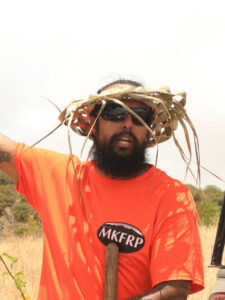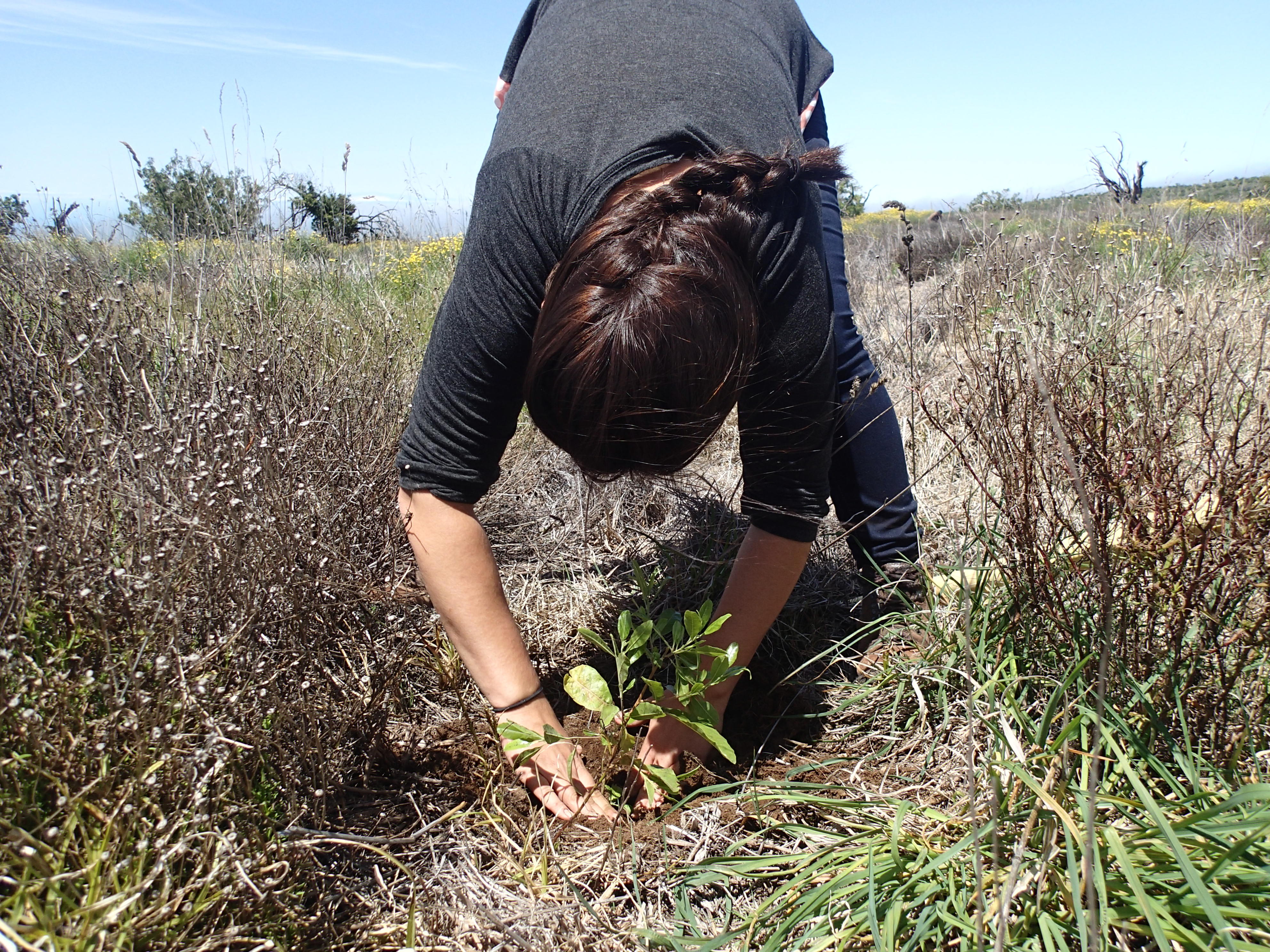Mauna Kea Forest Restoration Project
Mentor: Kalā Asing
STEM Fields: Ecological Restoration; Environmental Conservation; Forestry
Internship Research Goal: Rebuild the māmane forest on Mauna Kea by promoting the recovery of the critically endangered Palila bird (a finch-billed honeycreeper) and other endangered species.
Website: https://dlnr.hawaii.gov/restoremaunakea/management/forest-restoration
Facebook: https://www.facebook.com/MKFRP
Instagram: https://www.instagram.com/mkfrp
About Mauna Kea Forest Restoration Project:
The Mauna Kea Forest Restoration Project (MKFRP) is a collaboration between the Division of Forestry and Wildlife and the Pacific Cooperative Studies Unit at the University of Hawaiʻi. Their primary goal is to restore the high elevation dry forest around Mauna Kea. They work to rebuild the māmane forest on Mauna Kea to promote the recovery of the critically endangered Palila bird (a finch-billed honeycreeper) and other endangered species. Palila are found only on the upper slopes of Mauna Kea and are the last finch-billed honeycreeper in the main Hawaiian islands. The pods of the māmane plant are their primary source of food and Palila are the only species that can ingest the māmane pods.
In addition, the MKFRP does many things to try to preserve and restore the forests around Mauna Kea. They plant native plants (such as māmane, ʻilima, ʻiliahi) and remove invasive ones. MKFRP also controls invasive predators, like feral cats and mongoose, that have found their way to the upper elevation areas of Mauna Kea and have become direct threats to these native birds. In addition, MKFRP works to control indirect threats such as sheep and goats through fence maintenance. Finally, one of the biggest direct threats to upper elevation dry forests are forest fires and so, MKFRP also manages fire risks.
Mauna Kea is a sacred place and home to many unique native species that rely on the work that the MKFRP does. This project also has an important role in educating the community and the world about the importance of this area and its ecosystem. They hope to prepare future generations to show the same care and commitment to conservation.
 Meet Our Internship Mentor: Kalā Asing
Meet Our Internship Mentor: Kalā Asing
Kalā Asing was born in Kona and grew up in a paniolo family in Waimea, Hawaiʻi. He attended Honokaʻa High School and then Hawaiʻi Community College in Hilo where he earned an Associates degree in early childhood education. After graduation, he moved to Oʻahu to get his Bachelor’s degree in Education. However, while on Oʻahu, Kalā started dancing Hula and began reconnecting with his Hawaiian culture. This reconnection led Kalā to switch his major to Hawaiian Studies with a special focus in Hawaiian perspectives on natural resources management. Through this special degree track, Kalā was able to volunteer with natural resource agencies and participate in other similar opportunities, such as traveling to Kahoʻolawe to perform restoration and management work there. These experiences on Kahoʻolawe inspired Kalā to continue on in the natural resources career field.
After completing his Bachelor’s degree, Kalā obtained his master’s degree in Hawaiian Studies with an emphasis in natural resource management. Then, he began working for the Oʻahu Army Natural Resource Project in Wahiawa, Hawaiʻi. Currently, Kalā serves as the project coordinator at the MKFRP and handles everything from securing funding, day-to-day operations, scheduling and performing the restoration work with his team.
Internship duties and responsibilities
For this internship, students will either participate in day-trips to the worksite or a 4-night overnight camping trip on Mauna Kea under the supervision of the internship mentor and project staff member(s).
While on Mauna Kea, Students will:
- Learn the moʻolelo (stories/legends) of the area and how these moʻolelo shaped the landscape and the restoration work that is being completed
- Learn and practice the techniques used to restore the forest and protect the native species from predators
- Engage in discussions with their mentors about related topics
- Conduct observations
Examples:
- Fence monitoring, maintenance and repairs
- Maintaining plots where native plants are growing (such as removing invasive pasture plants)
- Native plant seed collection
- Forest bird identification (native and foreign)
- Discuss pros and cons of different techniques in plant growth and weed removal
- Observe new bird or insect species in the area and brainstorm reasons for their appearance
Interns should be comfortable with and able to:
- Work in unpredictable and uncomfortable weather conditions (from hot to foggy/cold).
- Work at high elevations (5,000 – 10,000 feet).
- Pay attention to their surroundings at all times.
- Follow safety protocols (training will be provided).
- Work outside and get dirty.
- Outdoor camping (pending).
2023 Summer Internship Schedule:
- Spring 2023: Sunday, April 2nd, (tentative time) 7am – 4:30pm at DOFAW baseyard in Hilo. Alternative Waimea or Saddle Rd meeting location TBA
- Summer 2023: Monday, July 10 at 7am – Thursday, July 13 at 5pm (Camping)
*Schedules are tentative and are subject to change. Interns will be required to work 8 hours in the Spring 2023. Interns will be required to work 40 hours in the Summer 2023.
Internship Meeting Location:
Mauna Kea Forest Restoration Project
19 E Kawili St
Hilo, HI 96720



